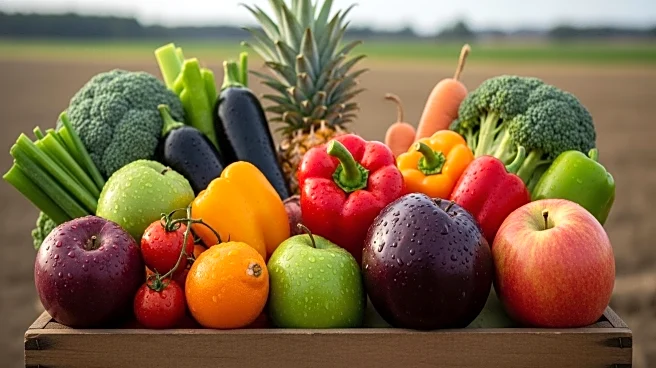What's Happening?
The agricultural sector is currently facing significant challenges due to drought and disease pressures impacting crop yields. The eastern Corn Belt, particularly Ohio, has experienced its driest August in 133 years, with some areas recording drought conditions among the driest in over 150 years. This situation may indicate the beginning of a long-term drought cycle. Additionally, crop diseases such as southern rust and anthracnose are affecting yields, especially in fields lacking fungicide protection, leading to reduced crop quality. Experts Agostino and Gopal have warned that while the USDA's September crop report might show high yield estimates, actual numbers could be lower once weight and quality are assessed in October or January. In Canada, StatsCan's July production report projected 19.9 million metric tons of canola, but farmers have reported highly variable yields across the Prairies, with Ontario and Quebec also experiencing below-average production due to drought.
Why It's Important?
The current drought and disease pressures on crops have significant implications for the agricultural industry, affecting both domestic and international markets. The reduced crop quality and yield could lead to increased prices and supply chain disruptions, impacting food availability and prices for consumers. Trade tensions with China further exacerbate the situation, as U.S. soybean export commitments are nearly 30% behind last year, with China largely absent from purchases. This could affect the profitability of U.S. farmers and the agricultural export market. The strong corn exports, nearly doubling last year's pace, provide some relief, but the overall outlook remains uncertain. The situation highlights the need for effective risk management strategies and potential policy interventions to support farmers and stabilize the market.
What's Next?
The agricultural sector will closely monitor the USDA's upcoming crop reports to assess the actual impact of drought and disease on yields. Farmers and agribusinesses may need to adapt their strategies to mitigate risks associated with weather and disease pressures. The ongoing trade tensions with China will also require attention, as indirect routes for soybean sales may continue to play a role in export dynamics. Stakeholders may advocate for government support and subsidies to help farmers cope with these challenges. Additionally, advancements in agricultural technology and disease-resistant crop varieties could be explored to enhance resilience against future drought cycles and disease outbreaks.
Beyond the Headlines
The current challenges in the agricultural sector underscore the importance of sustainable farming practices and climate resilience. Long-term drought cycles and disease pressures may necessitate a shift towards more sustainable and adaptive agricultural methods. The situation also highlights the interconnectedness of global trade and its impact on domestic markets, emphasizing the need for strategic international relations and trade policies. Ethical considerations regarding the use of fungicides and their environmental impact may also arise, prompting discussions on balancing crop protection with ecological sustainability.













